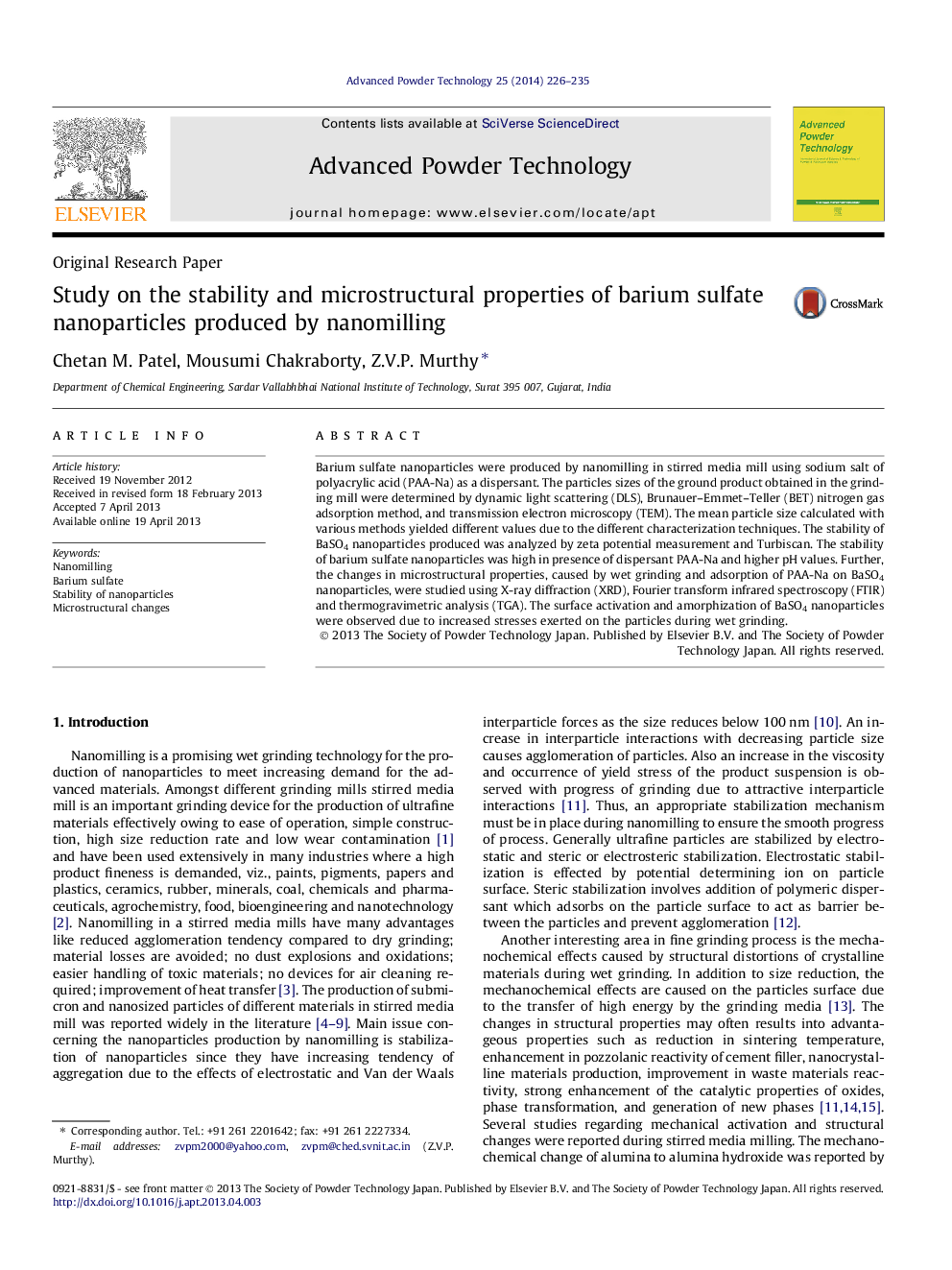| Article ID | Journal | Published Year | Pages | File Type |
|---|---|---|---|---|
| 144060 | Advanced Powder Technology | 2014 | 10 Pages |
•BaSO4 nanoparticles were produced by wet grinding in stirred media mill.•The primary particle size was less than 50 nm as measured by TEM and XRD.•The stability of nanoparticles suspension was improved by the use of dispersant.•Structural changes caused by grinding were evidenced from XRD, FTIR and TGA.
Barium sulfate nanoparticles were produced by nanomilling in stirred media mill using sodium salt of polyacrylic acid (PAA-Na) as a dispersant. The particles sizes of the ground product obtained in the grinding mill were determined by dynamic light scattering (DLS), Brunauer–Emmet–Teller (BET) nitrogen gas adsorption method, and transmission electron microscopy (TEM). The mean particle size calculated with various methods yielded different values due to the different characterization techniques. The stability of BaSO4 nanoparticles produced was analyzed by zeta potential measurement and Turbiscan. The stability of barium sulfate nanoparticles was high in presence of dispersant PAA-Na and higher pH values. Further, the changes in microstructural properties, caused by wet grinding and adsorption of PAA-Na on BaSO4 nanoparticles, were studied using X-ray diffraction (XRD), Fourier transform infrared spectroscopy (FTIR) and thermogravimetric analysis (TGA). The surface activation and amorphization of BaSO4 nanoparticles were observed due to increased stresses exerted on the particles during wet grinding.
Graphical abstractFigure optionsDownload full-size imageDownload as PowerPoint slide
